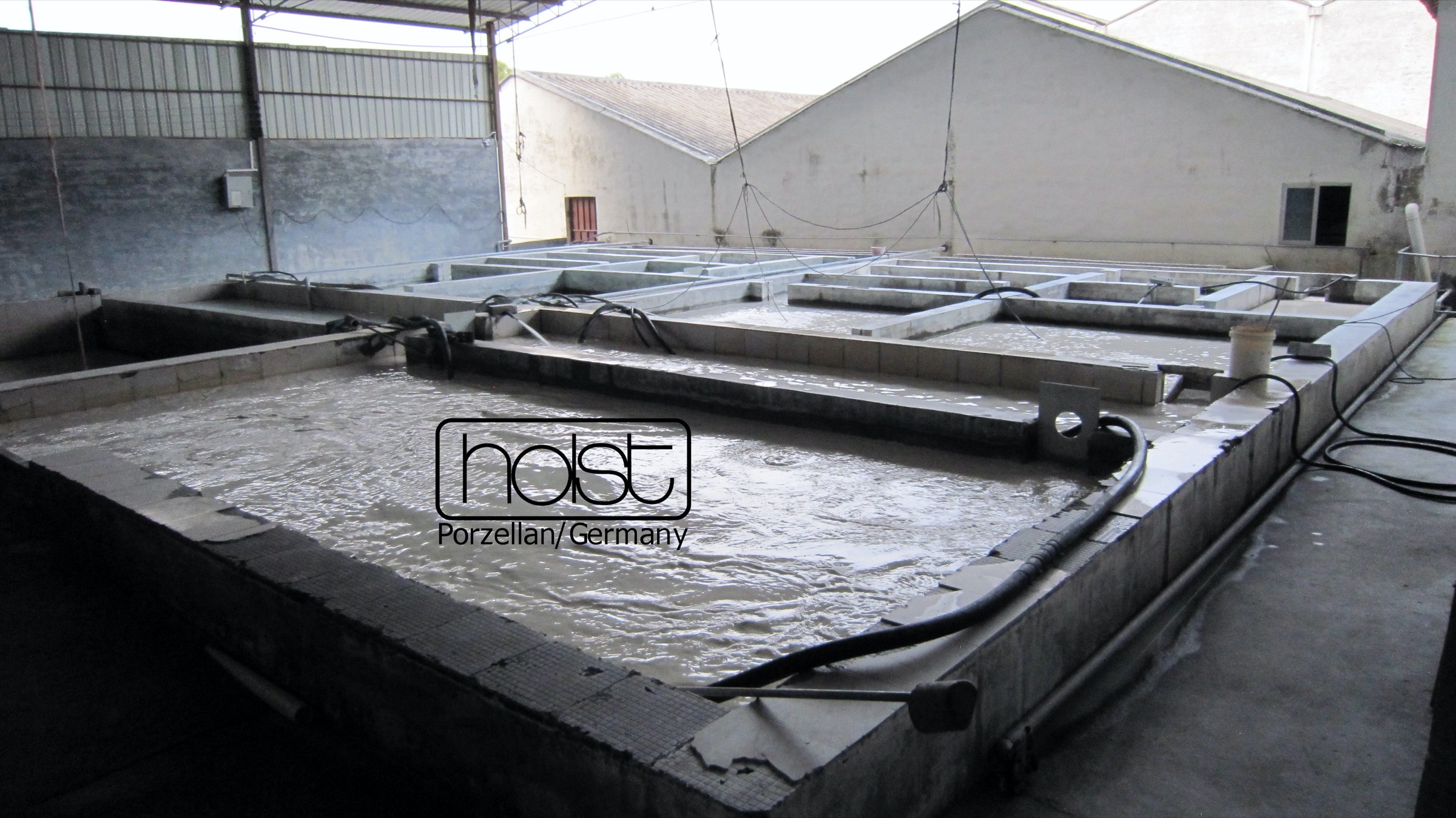Water
Water - a raw material in the porcelain industry

Water, with its chemical formula H2O, is an important raw material and auxiliary material in porcelain production, which is used in many areas of porcelain manufacturing. As water usually carries a large number of solids and foreign substances (e.g. ions, alkaline earth metals, calcium, magnesium and salts), the quality of the water also has a certain influence on the quality of the porcelain.
Factories with high quality standards therefore do not leave the water quality for porcelain production to chance or third parties, but operate their own filter and treatment plants. Especially in third countries this is of great importance, because local water suppliers do not all operate according to the standards we know in Europe. Factories with a high level of environmental and cost awareness even operate water treatment plants that return the waste water to new production processes. The solids filtered in the water treatment process are used as valuable raw materials, e.g. in the construction industry. A number of our partner plants work with this high ecological standard.
Water as binding and transport medium
When the basic materials of porcelain - kaolin, feldspar and quartz - are combined, water serves as a binding and transport medium for the production of the manufacturing masses. Large porcelain factories - picture above - often process between 50 and 150 tons of porcelain per day. In other words, between 70 and 220 cubic meters of production masses have to be processed and transported. This corresponds to the filling volume - full to the brim - of 220 pieces of container skips of form A. One behind the other, there is a queue of one kilometer filled skips at a time!
This makes it understandable why porcelain factories strive to pump the raw material preparation and transport to the production sites as fluidly as possible through pipes and sewers.
Moisture content of the masses
Once the raw materials have been freed from unwanted foreign matter, mixed, prepared and delivered to the respective production facility, they have approximately the following moisture content - depending on country, region, season and factory
| Isostatic granules | Dry mass | approx. 0,5 - 0,7% |
| Clay bar mass of 10 kg | Plastic mass | approx. 12 - 20% |
| High pressure mass | Liquid mass | approx. 15 - 25% |
| Casting mass | Liquid mass | approx. 25 - 40% |
In ceramic masses, the moisture contained in the spaces between the solid particles is relatively free to move, which becomes understandable when one considers that, for example, 25% water makes up 45% by volume. More strongly bound is the water which directly envelops the individual particles. Finally, in the case of swellable clay minerals, the interlayer water must also be taken into account.
In the drying phases of porcelain production, the masses are subject to different degrees of drying. Each drying phase describes its own degree of shrinkage. The model setter with his experience and professional qualification knows these degrees of shrinkage exactly. The proportional ratio of water to the solid mass is only of minor importance to him.
It is much more important to know the degree of moisture during the manufacture and use of the production moulds, as the hygroscopicity of the plaster moulds ultimately determines the thickness of the body and the stability of the end product - and thus the quality.
Water for granulate production
Today, modern porcelain factories produce a large part of their flat parts by means of an isostatic pressing process. This technique requires a special granulate, which is compressed and granulated in a sprayer. The water consumption of such sprayers is gigantic: one Dorst D 8000 evaporates about 8,000 liters of water per hour. If we calculate this manufacturer's statement in physics, 133,840,000 - one hundred thirty-three million eight hundred forty thousand - liters of water vapor are produced! per hour!
Whether, in view of this consumption, isostatic production is actually superior to traditional porcelain production remains questionable in terms of nature and the ever-increasing global warming and lowering of the water table.
Water is used in porcelain production in many other work steps, e.g.
- as cleaning and binding agent of dust
- as natural coolant in combination with air exchange
- as auxiliary material in decoration
which we do not want to go into further at this point.
